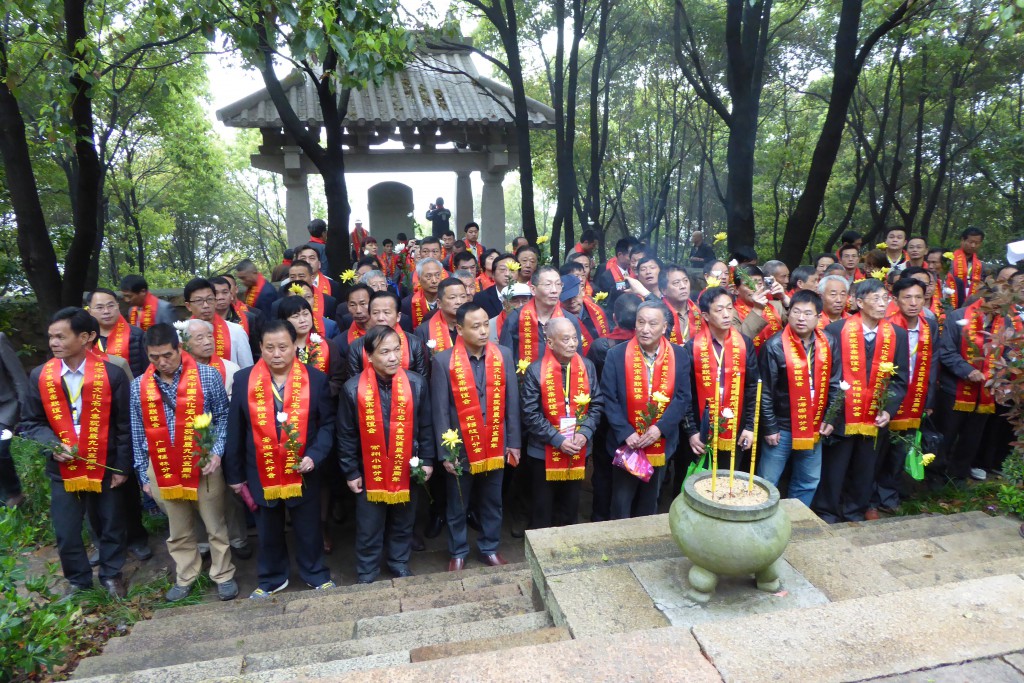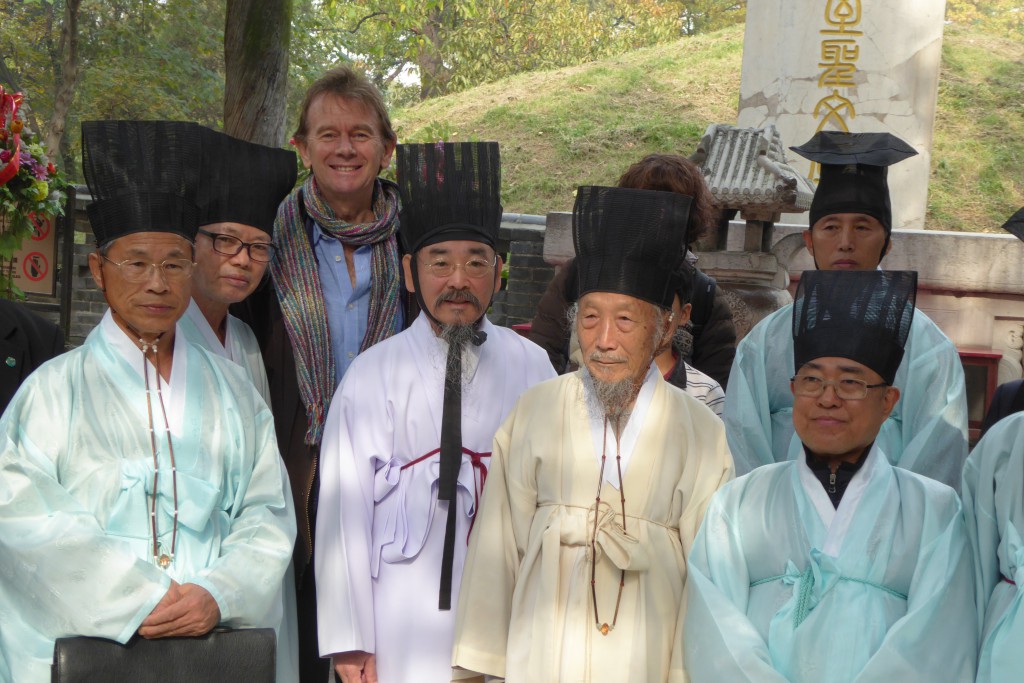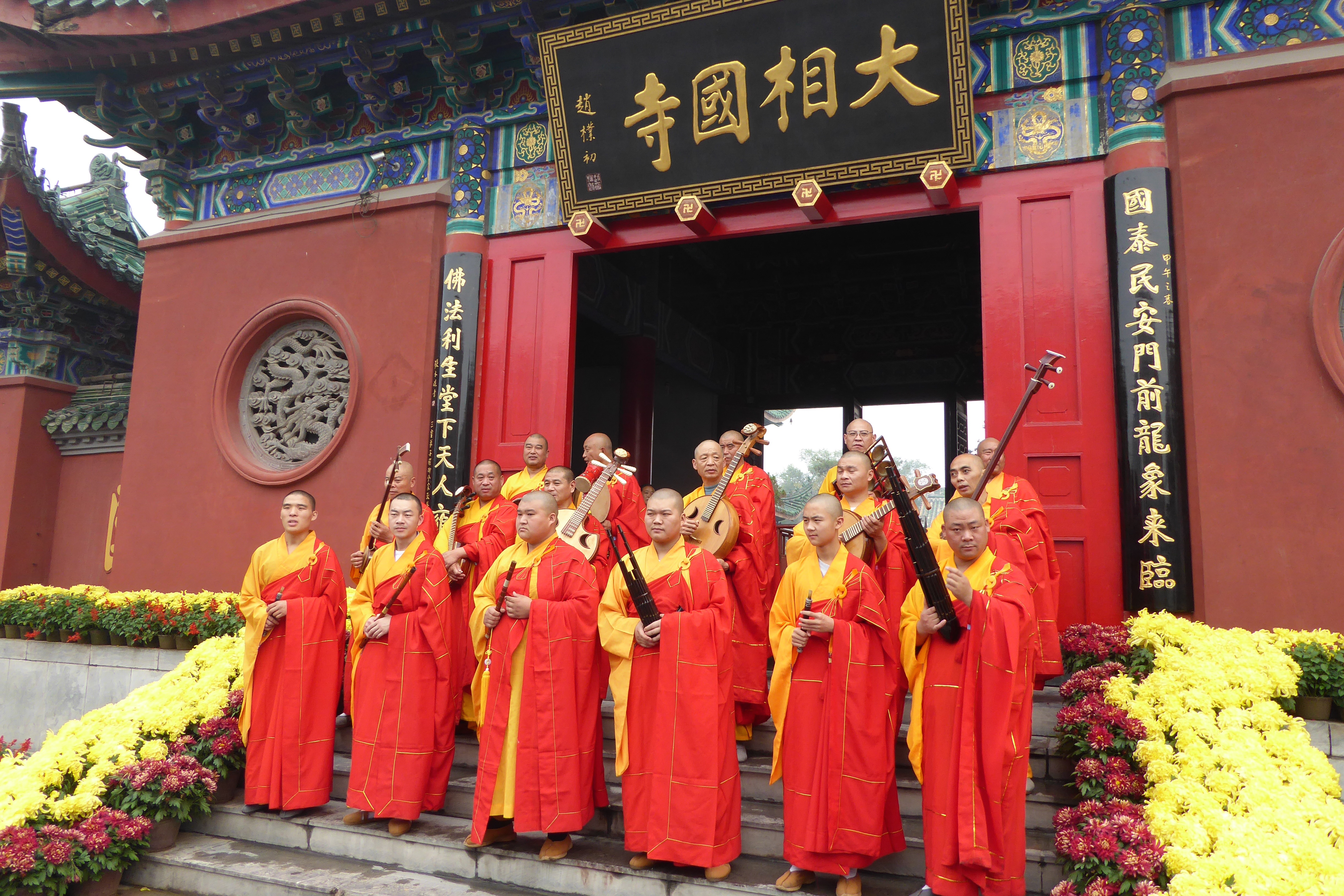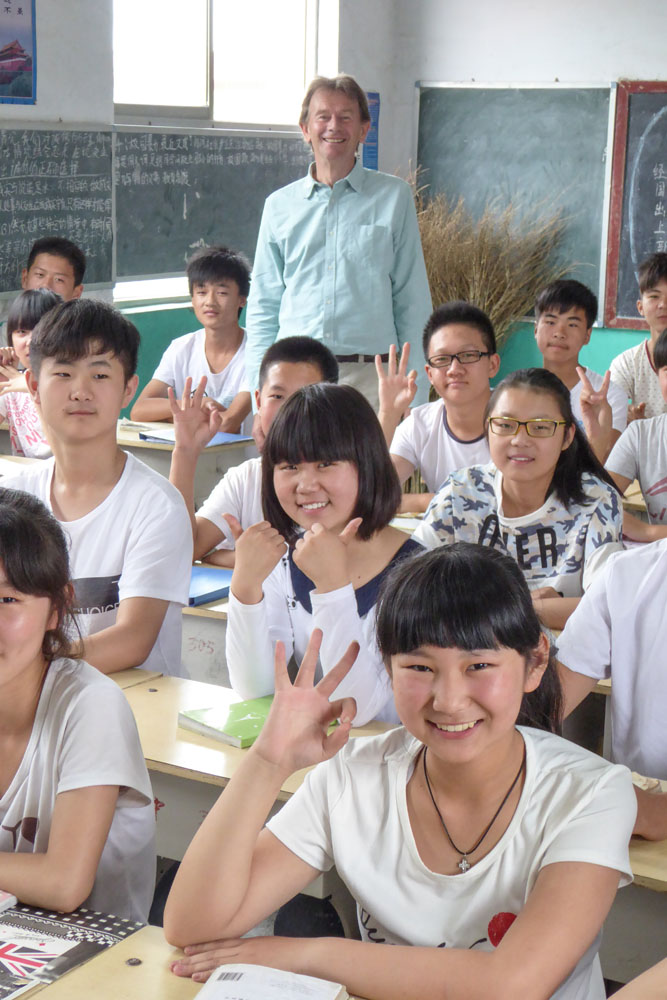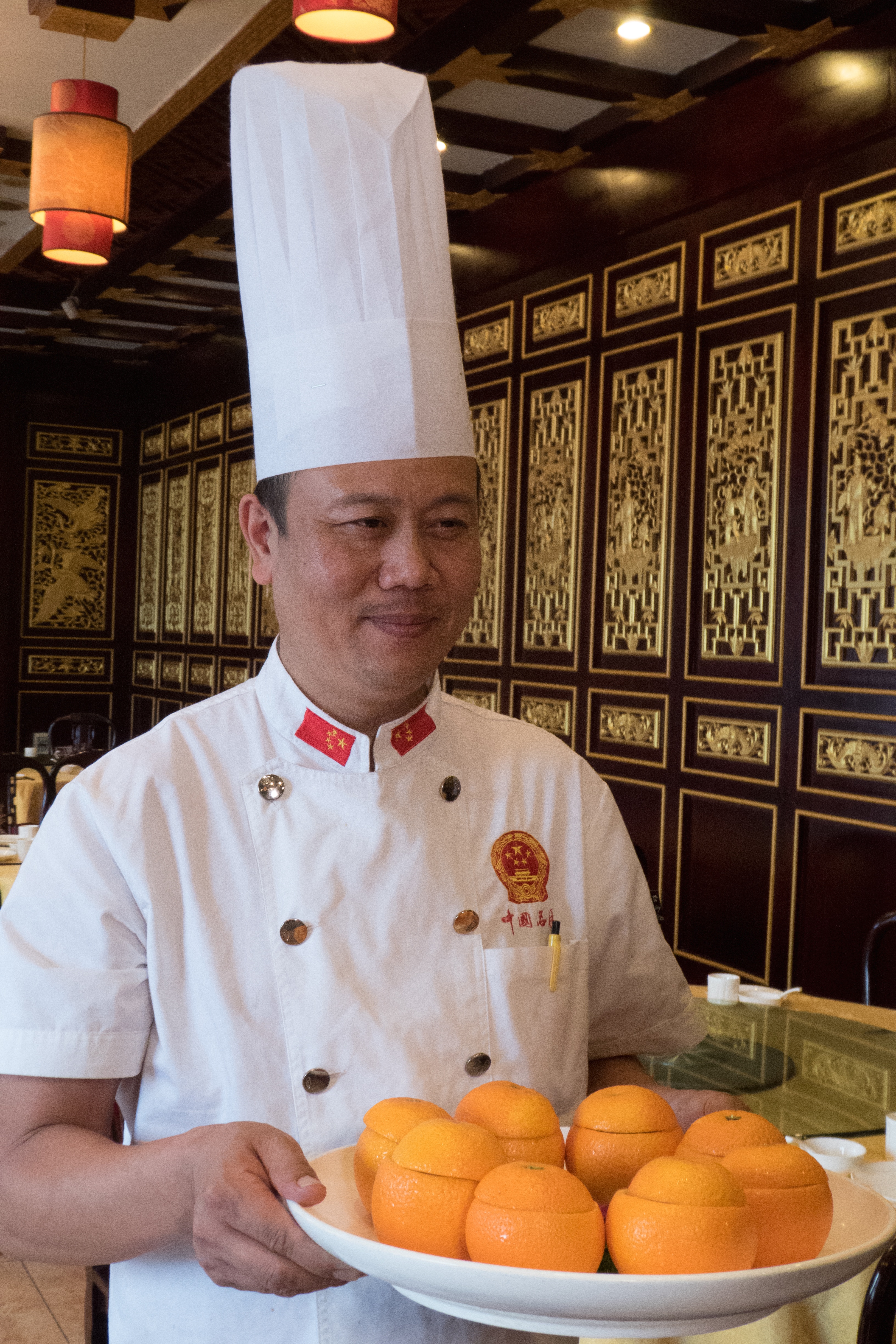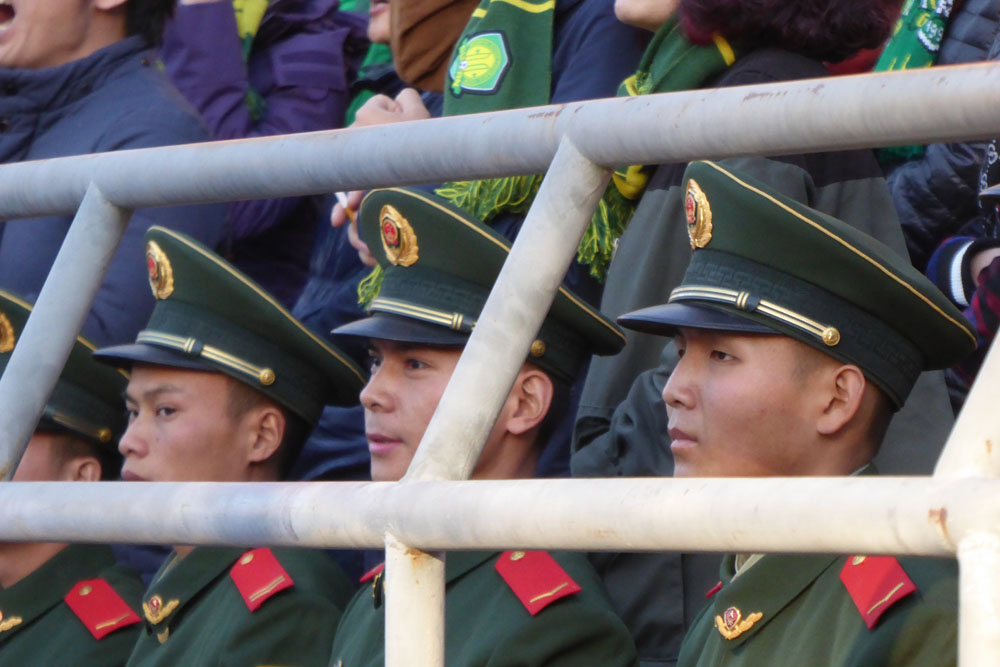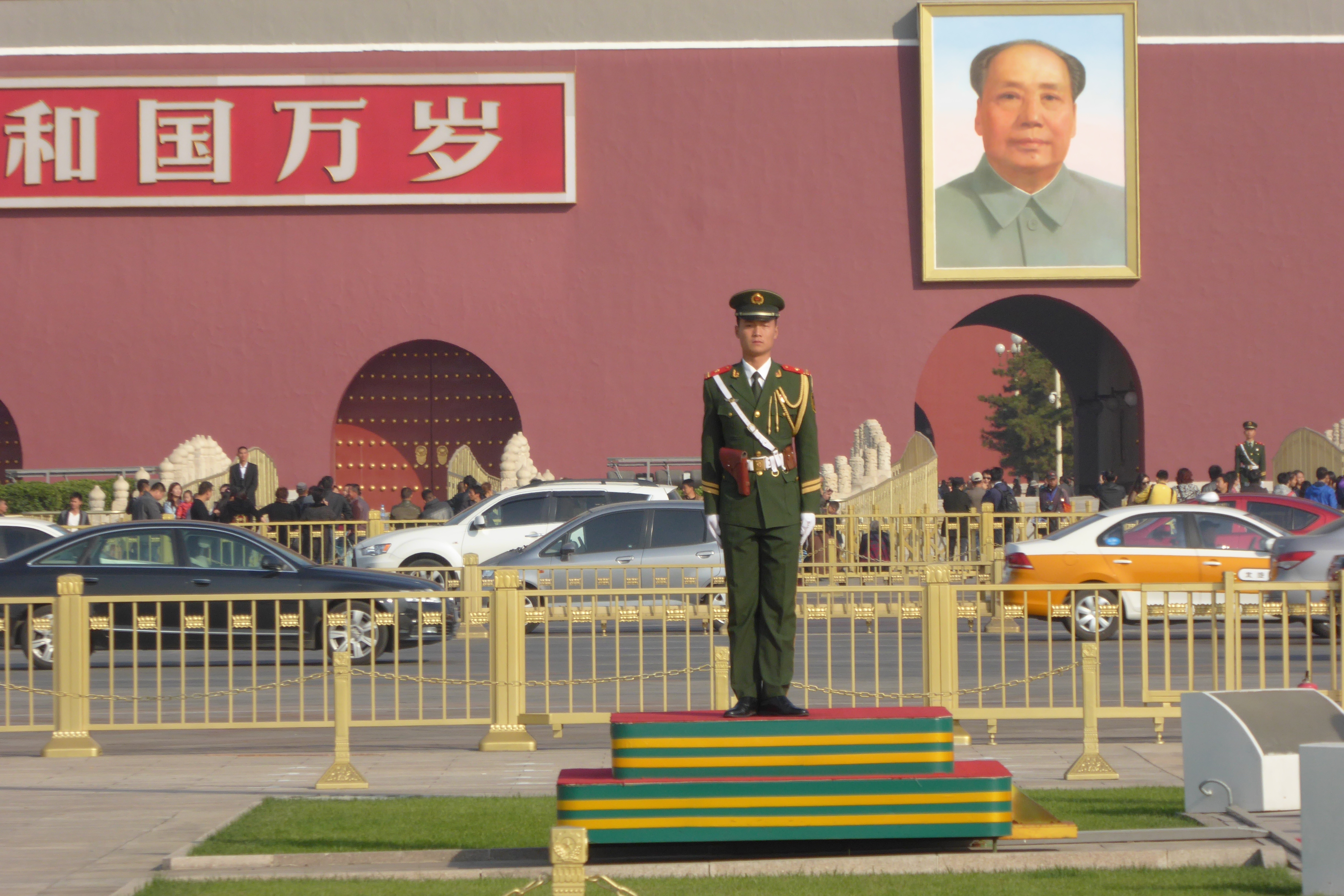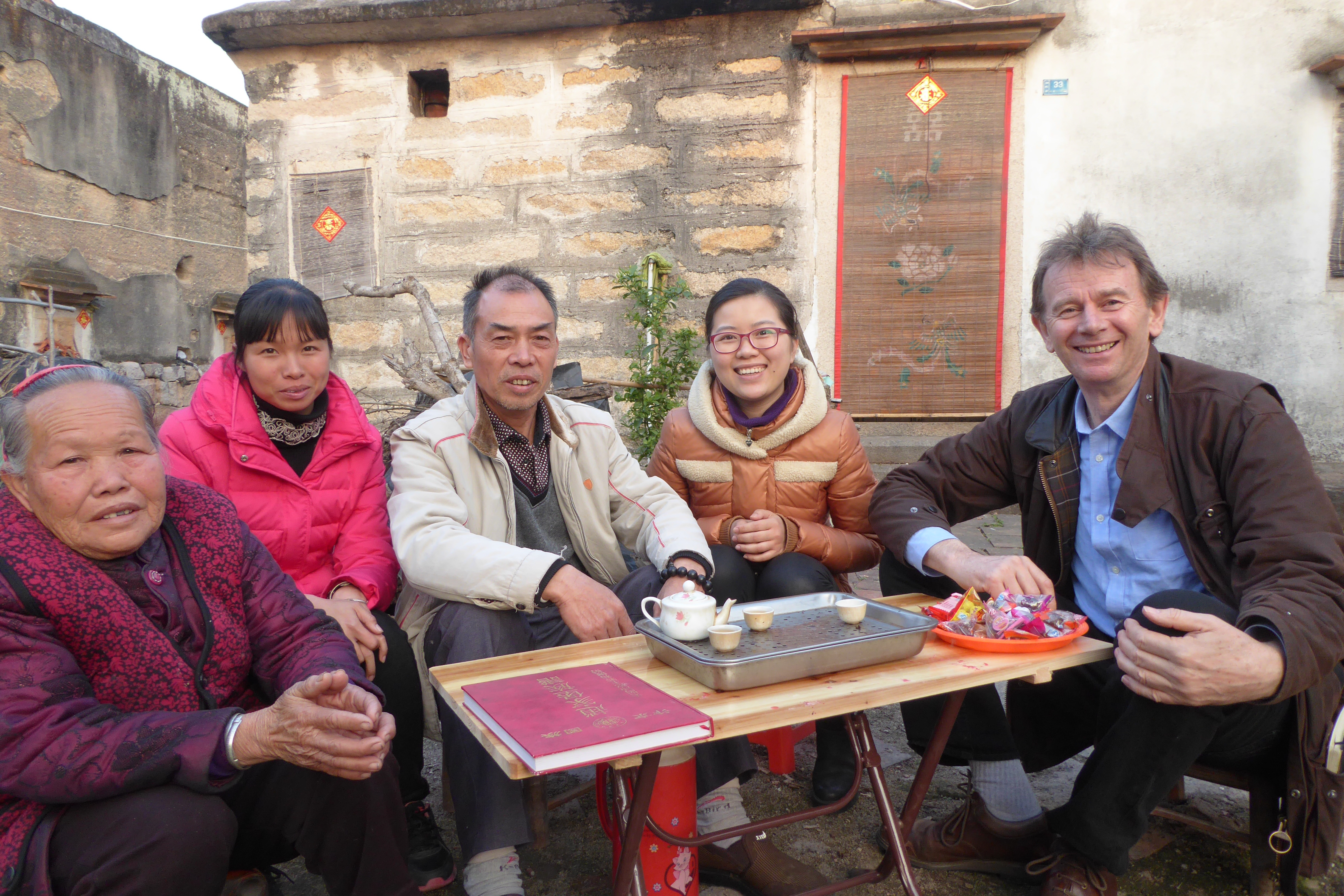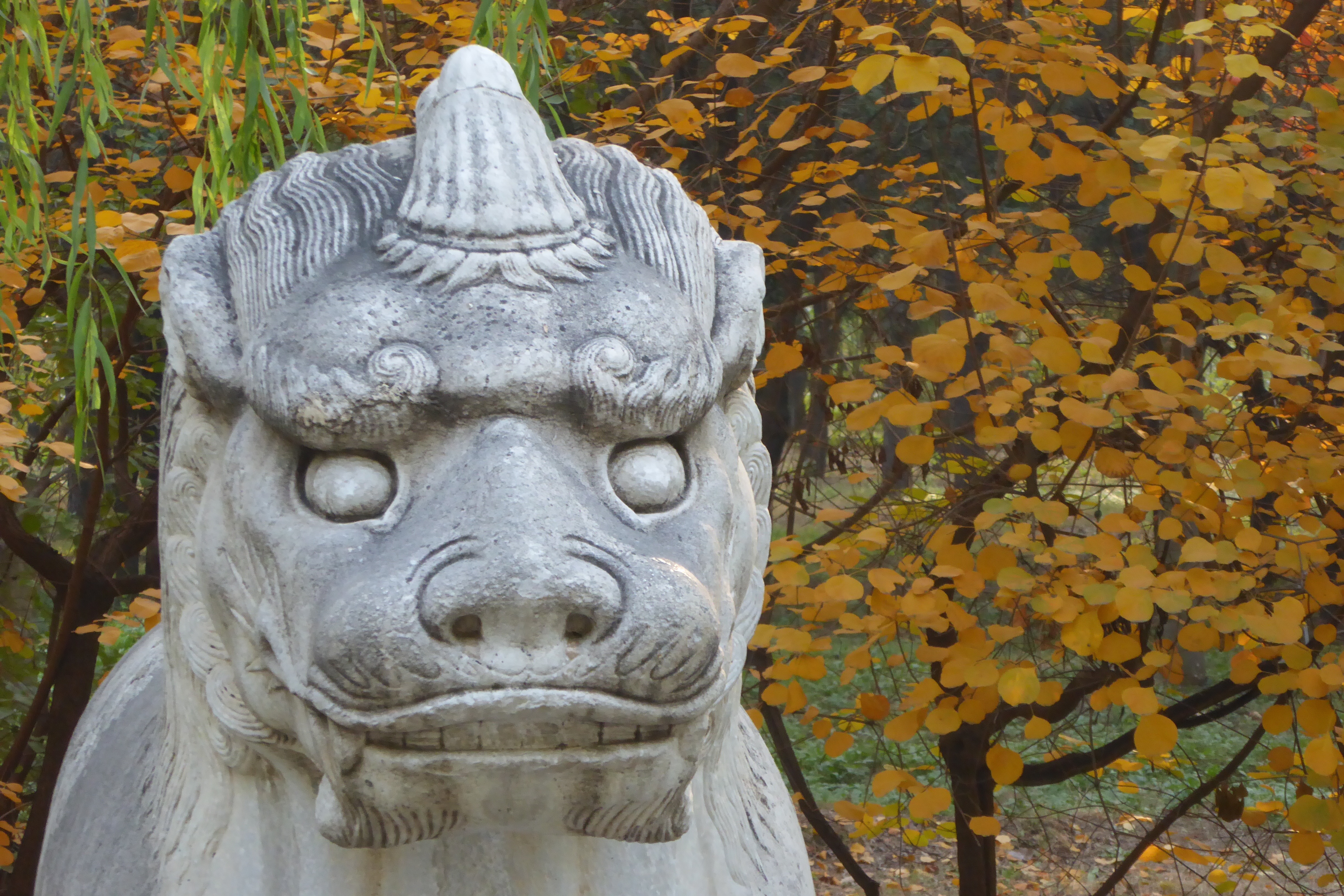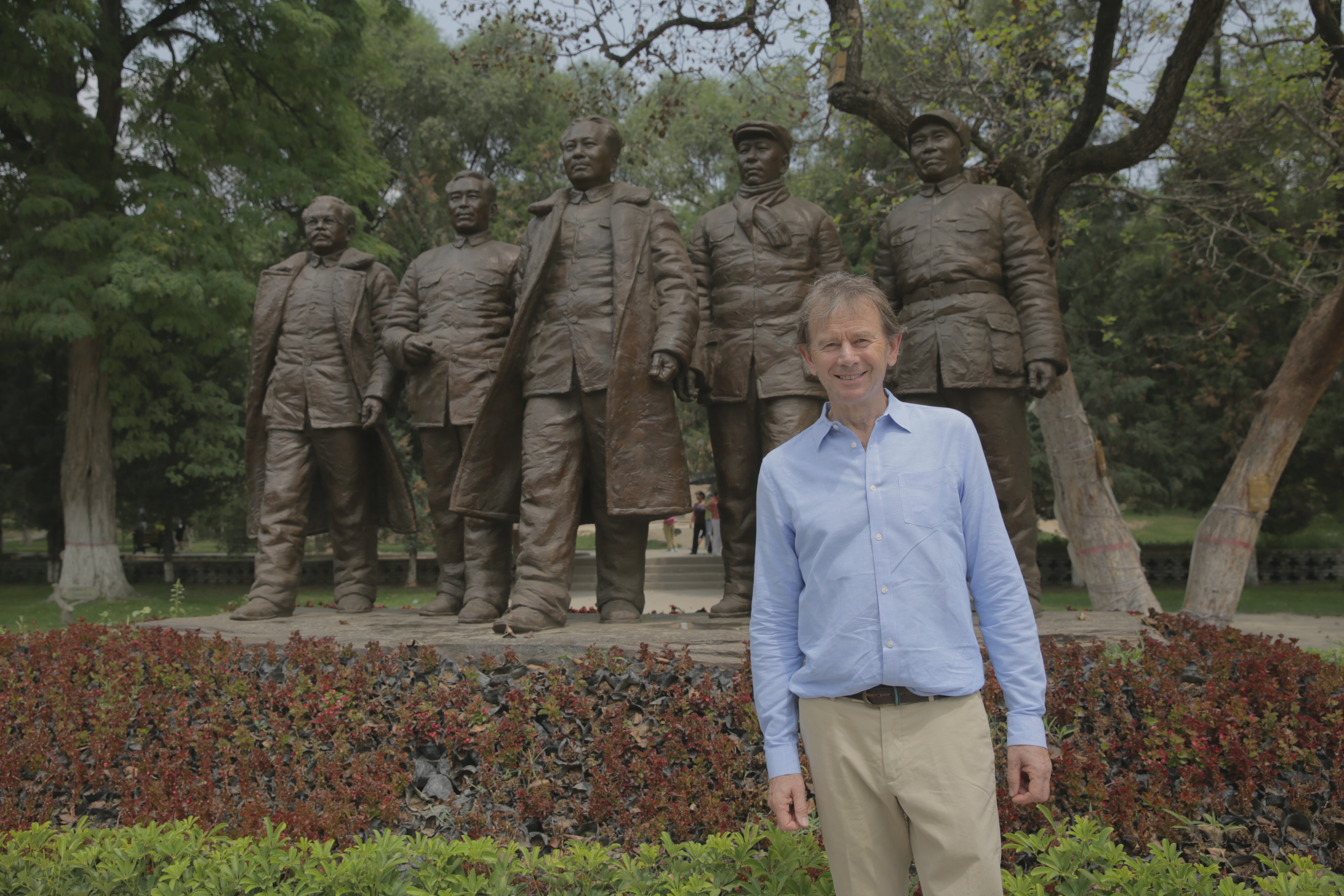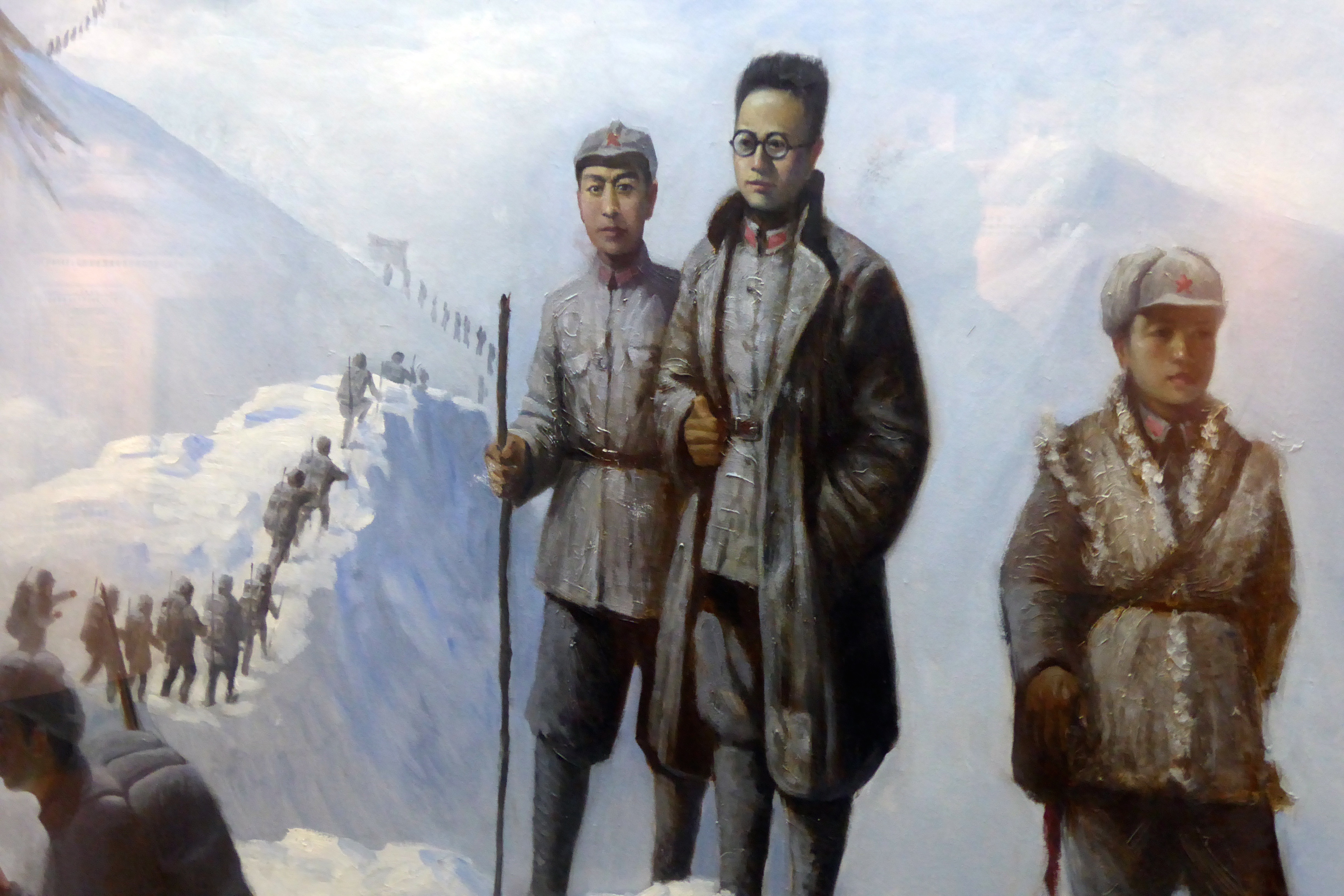The Story of China – Episode Guide
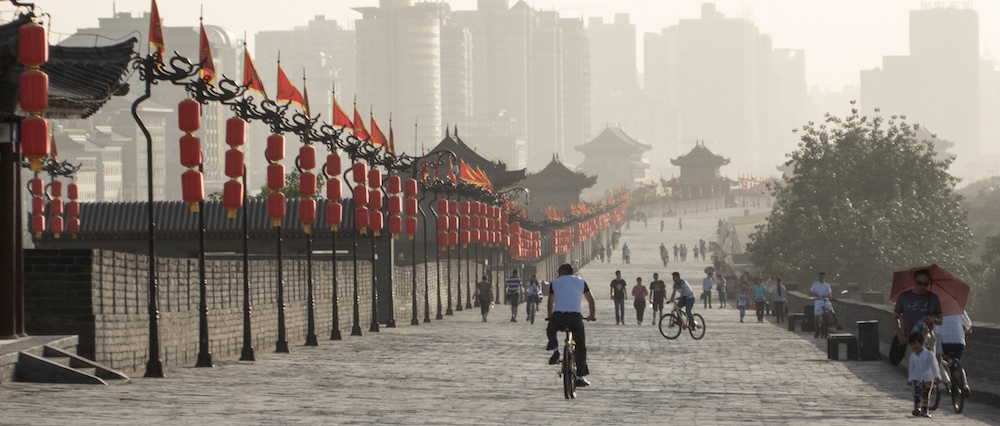
The oldest state on earth, today China is the second biggest economy in world and is flexing its muscles again across the globe. It’s a great time to look at what has made Chinese civilisation so utterly distinctive, and so brilliant, for so long. And time, too, to ask whether after the last 400 years of the triumph of the West, China – for long periods of history the greatest civilisation on earth, – is simply returning to its place? Those are the questions we set out with while filming The Story of China over the last two years.
Ep 1: ANCESTORS
In The Story of China, Michael Wood explores the history of the world’s oldest state and newest superpower, from its ancient past to the present day. Taking the high-speed train to Wuxi, Wood begins by joining in a family reunion at the Qingming Festival, when 300 relatives of the Qin clan gather to commemorate their ancestors on ‘Tomb Sweeping Day’. “Like the nation, the family has been through so much”, one says, ‘‘Now everyone wants to know – what are our roots?”
To answer that question Michael journeys to the plain of Yellow River, where he joins a million pilgrims at the shrine of the prehistoric Goddess Nüwa, who Chinese legend says, made the first people from the yellow mud of the Yellow River. Following ancient myths as told by traditional tale-tellers, Michael looks for the origins of the Chinese state at the excavations at Erlitou, in the wheat fields of Henan, where he sees an exquisite turquoise dragon sceptre from 2,000BCE – the first symbol of empire.
China’s first writing is then explored on Bronze Age ‘oracle bones’ dug up from the Shang royal tombs at Anyang that were discovered in the 1920s. Then at the Beijing Planetarium, Michael travels back in time as astronomers plot the planetary conjunction that the ancients believed foretold the overthrow of the Shang, China’s first great dynasty.
Pushing on in time, at a dramatic chariot burial pit recently found in Luoyang, Michael takes us to the period when China was divided into many ‘Warring States’, and then to the Age of Philosophers, and Confucius, whose book Analects, it has been said, has had greater influence worldwide than even the Bible.
In Xi’an we next hear how the First Emperor united China and created the authoritarian Qin state, which also gave us the word ‘China’. “Without him” says Michael, “China could have ended up today divided like Europe”.
Finally we return to the temple fair for a dramatic night ceremony to give thanks to the ancestors. China, Michael concludes, is rising again, not just because of its economic strength, but because of the incredible solidarity of the Han Chinese view of their own civilisation, their sense of family, and of course, the presence of the ancestors.
Ep 2: SILK ROAD AND CHINA SHIPS
Michael Wood next tells the tale of China’s first great international age under the Tang Dynasty (618-907). From the picturesque old city of Luoyang he travels along the Silk Road to the bazaars of Central Asia and into India on the track of the Chinese monk who brought Buddhism back to China in what Michael calls “one of the great exchanges between civilisations in history”. Immortalised in one of China’s favourite novels, Monkey or Journey to the West, the tale is still loved by the Chinese today and is brought to life by storytellers, films and even a village shadow puppet play.
Afterwards, in the Wild Goose Pagoda in Xi’an, monks show us palm leaf manuscripts brought back in the 7th century and at the gorgeous monastery of Xingjiao, where Xuanzang’s ashes are buried, the pilgrim’s letters back to India show the openness of Chinese civilisation so long ago.
Exploring the backstreets and markets of Xi’an, Michael meets descendants of the traders from Central Asia and Persia who came into China along the Silk Road. He talks to Chinese Muslims in the Great Mosque founded in the 7th century and across town we hear the amazing story of the first reception of Christianity in 635.
Michael now traces the beginnings of China as an economic giant, as Tang civilisation expanded into the South, setting the scene in a gale on a Yangtze ferry. On the Grand Canal a lock built in 605 still handles 800 barges every day! In Yangzhou we hear about Tang nightlife and in the port of Quenzhou we learn about the silk industry, and the world’s favourite drink – tea.
Michael looks too at the spread of Chinese script, language and culture across East Asia, Korea and Japan. “China’s influence on the East was as profound as Rome on the Latin West,” he says, “and still is today”.
Finally the film tells the story of the decline of the Tang, beginning with the great An Lushan rebellion in the 750s in which it is thought thirty million died or disappeared through war, famine and disease. Among the eyewitnesses were China’s greatest poets, including the Chinese Shakespeare, Du Fu, who is buried in the grounds of a local secondary school in the dusty town of Yanshi near Luoyang, Here in class, the effervescent pupils take Michael through one famous short Du Fu poem about loss and longing as the dynasty falls. And in that ordinary classroom, we are left with a sense of the amazing drama and the deep-rooted continuities of Chinese culture.
Ep 3: GOLDEN AGE
This week we tell the tale of China’s most creative dynasty, the Song (960-1279) which emerged out of the chaos that followed the end of the Tang. Michael Wood heads first to the city of Kaifeng: the greatest city in the world before the 19th century. Here in Twin Dragon Alley, locals tell him the legend of the baby boys who became emperors. He then explores the ideas and inventions that made the Song one of greatest eras in world culture, helped by China’s most famous work of art, ‘The Qingming Scroll’, which shows the life of the city in around 1120. In Kaifeng a chef makes Michael a recipe from the Song Dynasty Mountain House Cookbook, while a guide, How Old People Can Lead Happy Healthy Lives, published in 1085 (and still in print!) is discussed with local women doing their morning exercises.
The Song was also a great era for scientific discovery in China. Michael steers a huge 45 feet high working replica of an astronomical clock, made by China’s Leonardo da Vinci, the polymath, Su Song. Then at a crunch Chinese Premier League match, Michael tells us how the Chinese invented ‘Kick Ball’ which a thousand years ago had clubs, fans, rulebooks and even music at half time but in a Confucian society of course there was no abusing the referee!
Preceding and in some ways surpassing the achievements of the European Renaissance, with technological advances and lively debates about the nature of good governance, China could have become the world’s first modern civilisation. But as so often in Chinese history things were cut short by outside invasion.
The golden age of the Northern Song ended in 1127 when invaders sacked Kaifeng, in one of the great dramas of Chinese history, which Michael tells in the rain swept night market in Kaifeng. But south of the River Yangtze, the Song survived and rebuilt the ethos of Chinese culture, handing it down till today. We visit their new capital Hangzhou, and its famous beauty spot, the West Lake, where Michael joins locals in an early morning dance by the lakeside! And out in the countryside in the beautiful wooded hills of Huizhou we meet a descendent of Song scholarly administrators; in his crumbling mansion he shows us the family altar room and his records of 40 generations of ancestors.
In the 13th century China fell to the Mongols. The final defeat of the Song took place in a naval battle in the estuary of the Pearl River in 1279. When all was lost, rather than surrender to the Mongols, a loyal Minister jumped into the sea with the young boy Emperor in his arms. “So ended the glory of the Song” Wood concludes: “But a new age would arise…as in China it always has!”
Ep 4: THE MING
With the Forbidden City, the Great Wall and fabulous blue porcelain, the Ming gives us the defining images of historical China today. The tale of China’s most famous dynasty begins with the amazing story of the emperor Hongwu. Born a peasant, he lived as a beggar, a wandering Buddhist monk and as a rebel leader, but he founded one of greatest eras in Chinese history. The film takes us to his great capital Nanjing, with its vast gateways and its surviving 13 miles of walls, each brick stamped with name of the village that made it. Following the trail of the bricks we go out to the Bao family village in Anhui and from the old woodblock printed family history, we hear their story from those times. In the nearby county town the villagers enact a Ming murder story, which highlights the severe punishments in Hongwu’s Great Ming Law Code.
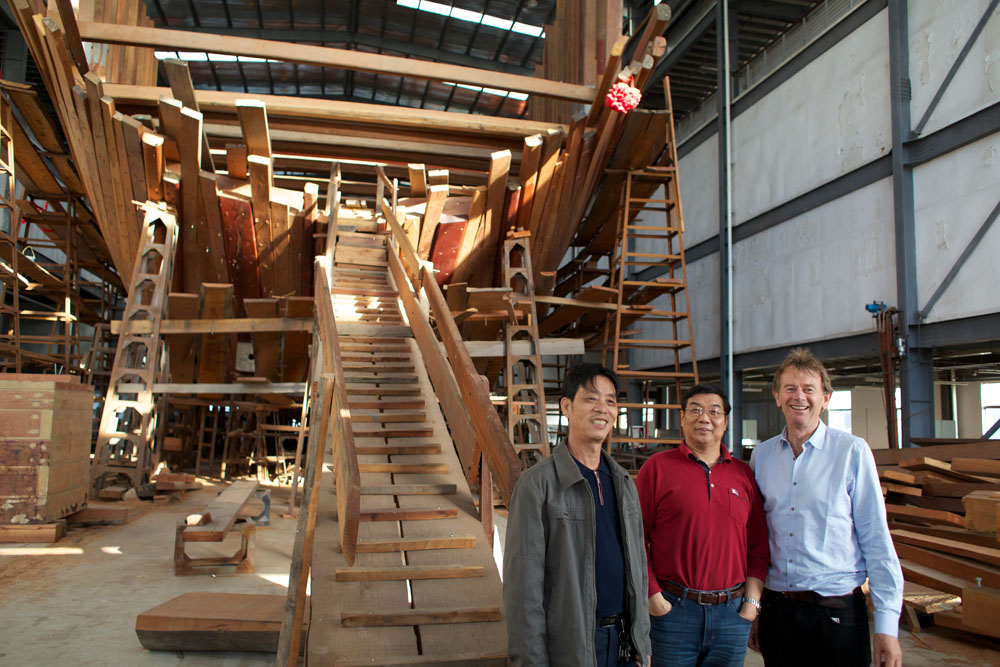
Michael Wood with T.J. Jia who is building a traditional flagship junk like the one Zheng He would have sailed on
We next visit the Forbidden City and the Temple of Heaven in Beijing; we see the Ming Great Wall and learn why it was built. We travel with barge owner Mr Hu down the Grand Canal – China’s great artery of commerce right up to the present day. Then come Admiral Zheng He’s voyages to Africa and the Gulf, decades before Columbus. By the old shipyards in Nanjing we see the construction of an ocean-going wooden boat 250 feet long – the size of Zheng He’s ships – and we hitch a ride with a junk in the South China Sea.
Meanwhile as China’s prosperity grew so did a rising middle class. “In the Ming, China knew how to shop!” says Michael. He looks at Ming culture in Suzhou, the ’Venice of China’. Staying in a merchant’s house, he explores the silk industry, ceramic and lacquer making and visits one of the most beautiful gardens in this city of gardens. We even hear part of the Ming version of Sex and the City from a traditional story teller!”
But the world was changing. The Middle Kingdom may still have been the world’s greatest civilisation, but the centre of gravity of history was beginning to shift.
Now we move on to Macao and the fateful arrival of Jesuit missionary, Matteo Ricci, who hoped to convert China to Christianity – the beginning of what will be continuous contact with the West and Western ideas. In the cathedral in Beijing we learn more about these exchanges from the Chinese Bishop of Beijing.
By 1600 the Ming world was in decline after a string of mediocre rulers. In Shaoxing, the Chinese city of writers, we visit the house of the ‘Ming Proust’ Zhang Dai, who wrote nostalgically about this fin de siècle time. Finally back in the countryside to we visit the Zhao family on the Fujian coast who tell us what things felt like as order disintegrated in the face of floods, famine, rebellion and pirates. Showing their family records they tell us how their ancestors were forced to build their own castle and watchtower as government retreated. The film ends in an elegiac mood as the Ming Dynasty falls to Manchu invaders in 1644.
Ep 5: THE LAST EMPIRE
The last Chinese empire, the Qing, lasted from 1644 till 1911. It began in violence and war as the Manchus swept down from the north, devastating the great cultural city of Yangzhou. But these outsiders became “almost more Chinese than the Chinese”. Three generations, father, son and grandson ruled for 133 years, among them, Michael Wood argues, China’s greatest emperor, Kangxi. Under the Qing, China doubled in size to include Xinjiang in the far west, as well as Mongolia and Tibet, creating the essential shape of China today.
In Xinjiang Michael is entertained by an old Uighur family, and in Kaifeng, he looks at how the new dynasty supported diverse cultures and religions, including Islam, visiting an all-women’s mosque with a female imam, a delightful scene that ends with laughter and selfies! The Qing also undertook great cultural projects. At a traditional Yangzhou printing house we watch wood blocks being hand carved, and see how The Complete Tang Poems commissioned by Kangxi were printed – over 48,000 of them! 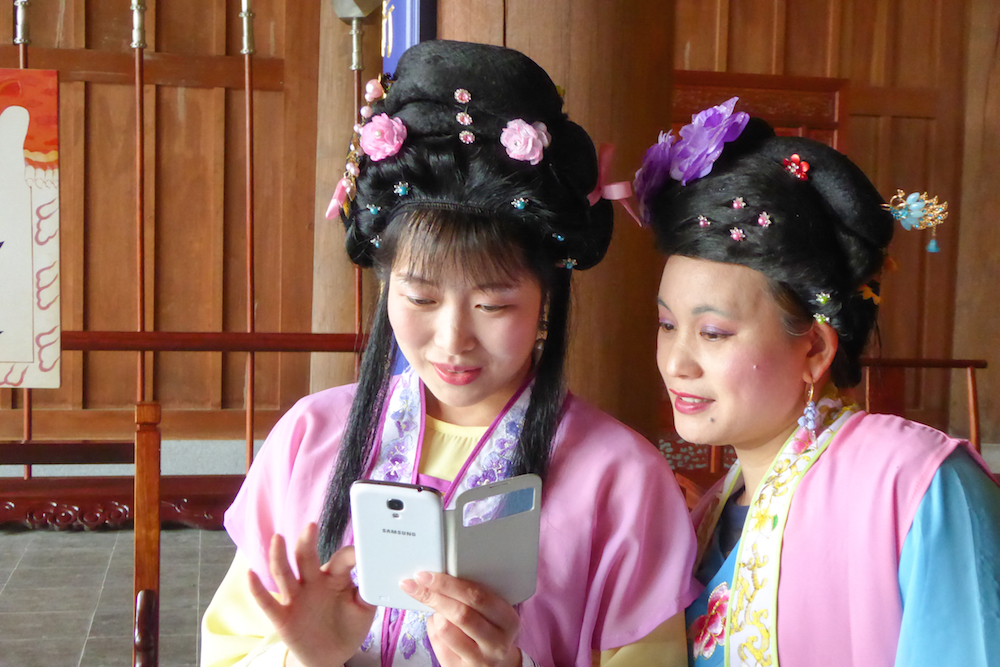 We travel through the wintry countryside to a village where a hardy audience celebrate Grandma’s 90th birthday watching open-air opera. We look at painters who anticipated the European Expressionists by 150 years and in a story telling house in Yangzhou we hear the popular oral culture.
We travel through the wintry countryside to a village where a hardy audience celebrate Grandma’s 90th birthday watching open-air opera. We look at painters who anticipated the European Expressionists by 150 years and in a story telling house in Yangzhou we hear the popular oral culture.
In Beijing, Michael tells the story of China’s favourite novel, The Dream of the Red Chamber, an 18th century family saga behind which lies the real-life tale of a family who rose under Kangxi’s patronage, only to be ruined by his son. Over hot chocolate in the bohemian Houhai quarter by Beijing’s North Lake, a young musician who is a passionate devotee of the novel, tells Michael that “this book is all about the eternal verities – freedom and love!”
At that time in the mid 18th century, China was the greatest economy in world and the film sets out to give us a sense of the rich culture that came with that prosperity.
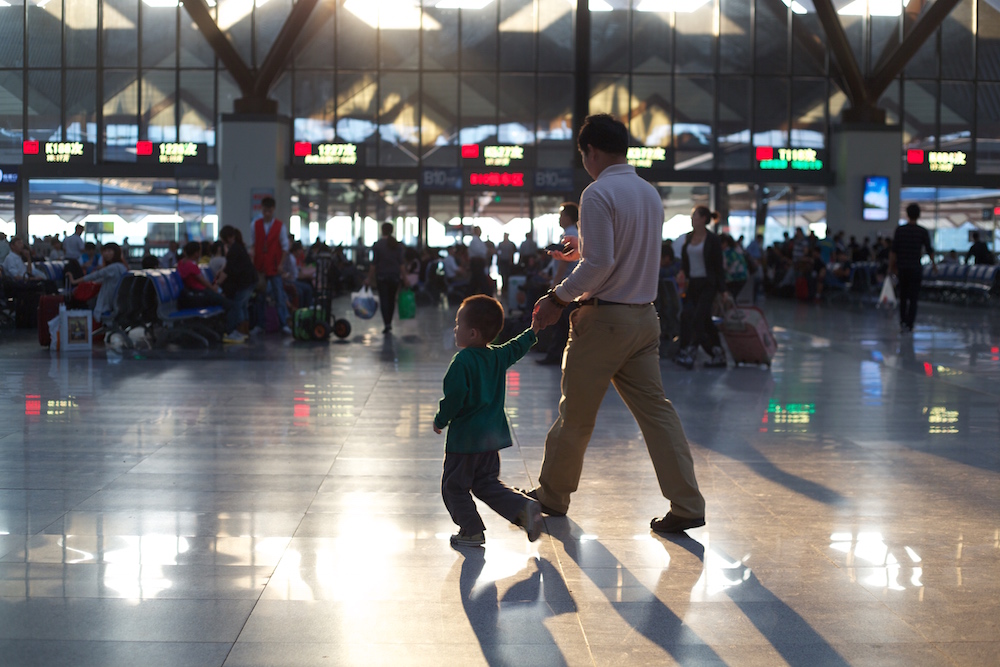 But then into that world come the British. The film draws to its climax with the Macartney Embassy to Beijing in 1793 and the clash with the British over the opium trade. Alarmed by the scale of the addiction, the Chinese destroyed British opium in Canton, and the British responded with Palmerston’s ‘gunboat diplomacy.’
But then into that world come the British. The film draws to its climax with the Macartney Embassy to Beijing in 1793 and the clash with the British over the opium trade. Alarmed by the scale of the addiction, the Chinese destroyed British opium in Canton, and the British responded with Palmerston’s ‘gunboat diplomacy.’
In the First Opium War, a British fleet sailed into the Pearl River and blew the Chinese junks put of the water. In 1842 in the Treaty of Nanjing, the British extracted territory – treaty ports and trading rights – beginning what the Chinese call the ‘Century of Humiliation’.
But we leave not with gloom but with a glimpse of the future. “Every dynasty has risen and then declined” says Michael “and then needed new life to regenerate. This time the unforeseen catalyst was the British”. Among the land China ceded was an uninhabited island, Hong Kong – today one of the world’s top financial centres – and Shanghai, a small town then, but now the greatest city in world. The making of modern China had begun.
Ep 6: THE AGE OF REVOLUTION
“Revolution” Michael Wood observes “has been almost a natural fact of life in Chinese history”. Between 1850 and 1950 three cataclysmic revolutions shook China to the core, but out of them, today’s China emerged. The film begins in Canton, today’s Guangzhou, with the meeting of a US missionary and a Chinese student called Hong. Inspired by the Christian story and driven by visions and prophecies, Hong came to believe he was God’s Chinese son and he unleashed the bloodiest war of the 19th century, the Taiping Rebellion, in which 20 million died.
Michael heads into wild mountain villages in the south where the revolution began. Here, off the beaten track, he meets families who remember how their ancestors rose against the Qing Empire. In Nanjing, the Taiping created God’s kingdom on earth but after 16 years, in a terrible denouement, the rebellion was crushed: a story told by a traditional tale teller. Afterwards the foreign powers exacted more concessions, and more treaty ports, where foreign influence and infrastructure grew. Banks – like HSBC founded in Hong Kong and Shanghai in 1865 – along with trams and railways, which brought growth, wealth, and a Western vision of modernity.
The second great rebellion came in 1900. The Boxer Uprising exploded with terrifying violence against the foreigners, with the murder of missionaries and Chinese converts and the 55-day siege of the foreign legation quarter in Beijing. In a village near the coal town of Taiyuan we hear from a local diarist, a Chinese Everyman, how the rising was seen by the Chinese people – and what they felt about the foreigners’ presence in their land.
The Boxers were crushed by the western powers, which extorted a huge indemnity, $60 billion in today’s money. China was on the brink. Michael takes us to Shaoxing to tell the story of the feminist poet and revolutionary Qiu Jin, executed before the failed uprising of 1907. Finally in 1911 the Empire ended and China became a Republic, but in its brief life it knew no peace. China sent 140,000 labourers to the Western Front, only to be humiliated at the Treaty of Versailles when the German colonies in China were handed to Japan.
In China popular rage triggered the May 4th ‘New Culture’ movement whose leaders included China’s greatest modern writer Lu Xun from Shaoxing. But between the two World Wars the disparity between rich and poor, city and countryside only increased.
We visit Hong Kong’s Peninsular Hotel in the Jazz Age, then follow the revolutionary Mao Zedong on the Long March to Yan’an. World War II came to China two years earlier than it did in the West with the Japanese invasion and in Nanjing, Michael meets a survivor of the Japanese massacre of 1937. The tale of the communist era includes a visit to a surviving Maoist commune, before Mao’s death, and the boom time of the last three decades. Finally, after an epic sweep of 4000 years, the series ends back with the Qin family of Wuxi, with the warmth and jollity of the Chinese New Year, and then at the Altar of Heaven in Beijing, a last haunting glimpse of the old China.
See Michael Wood’s Highlights from The Story of China shoots.
